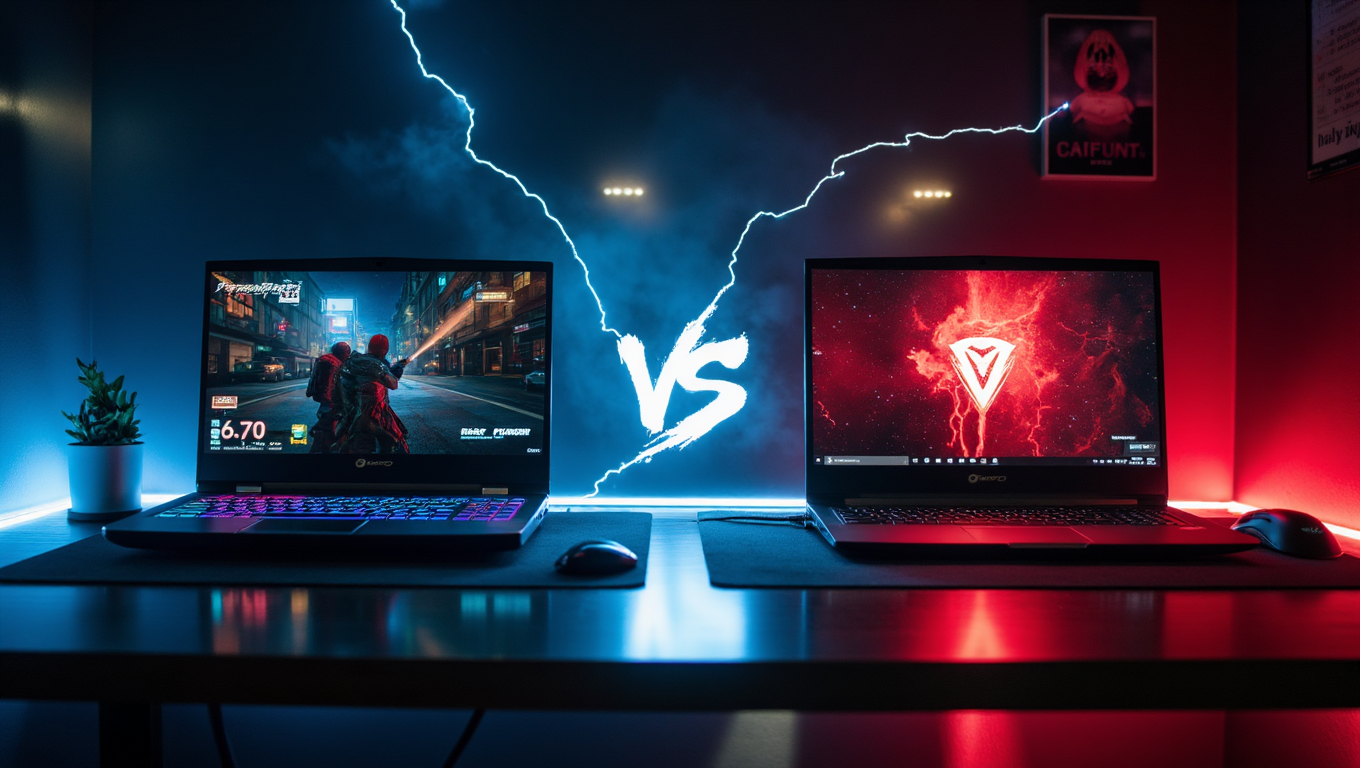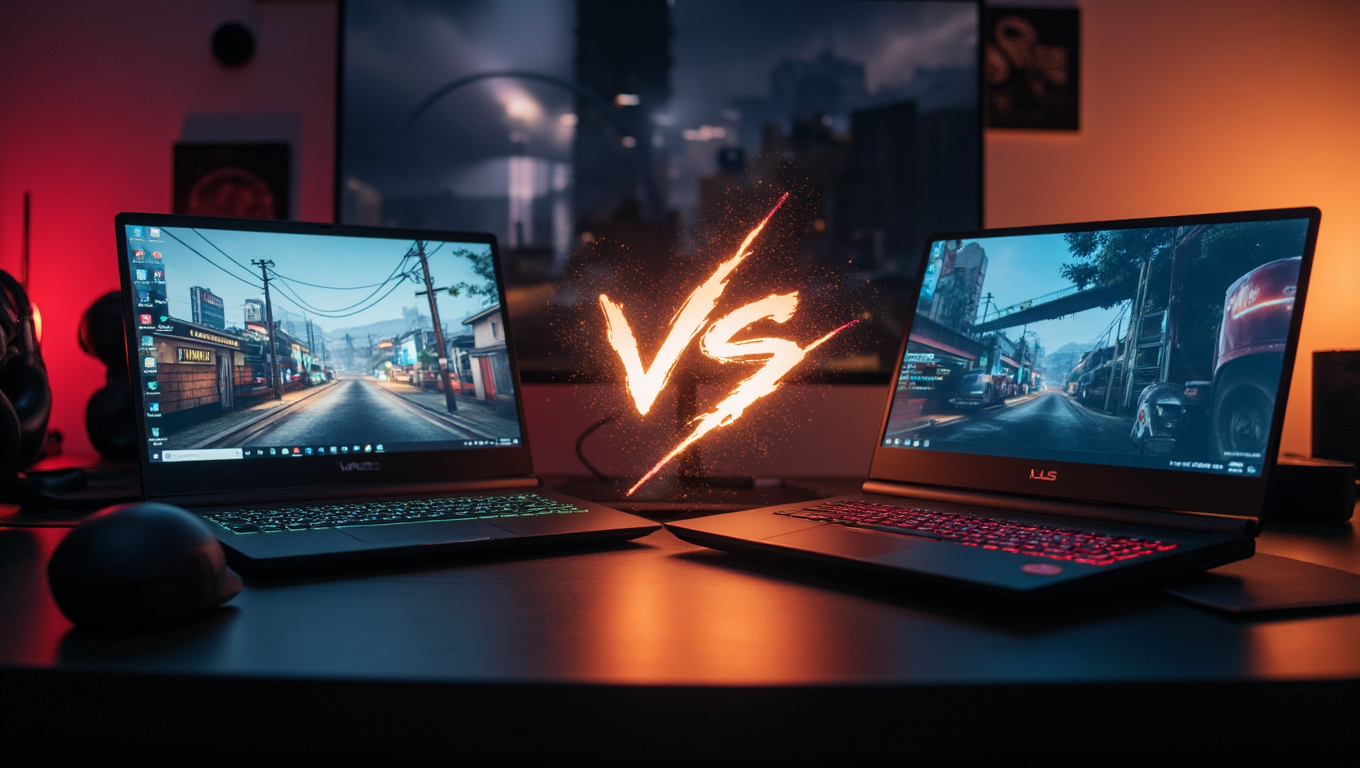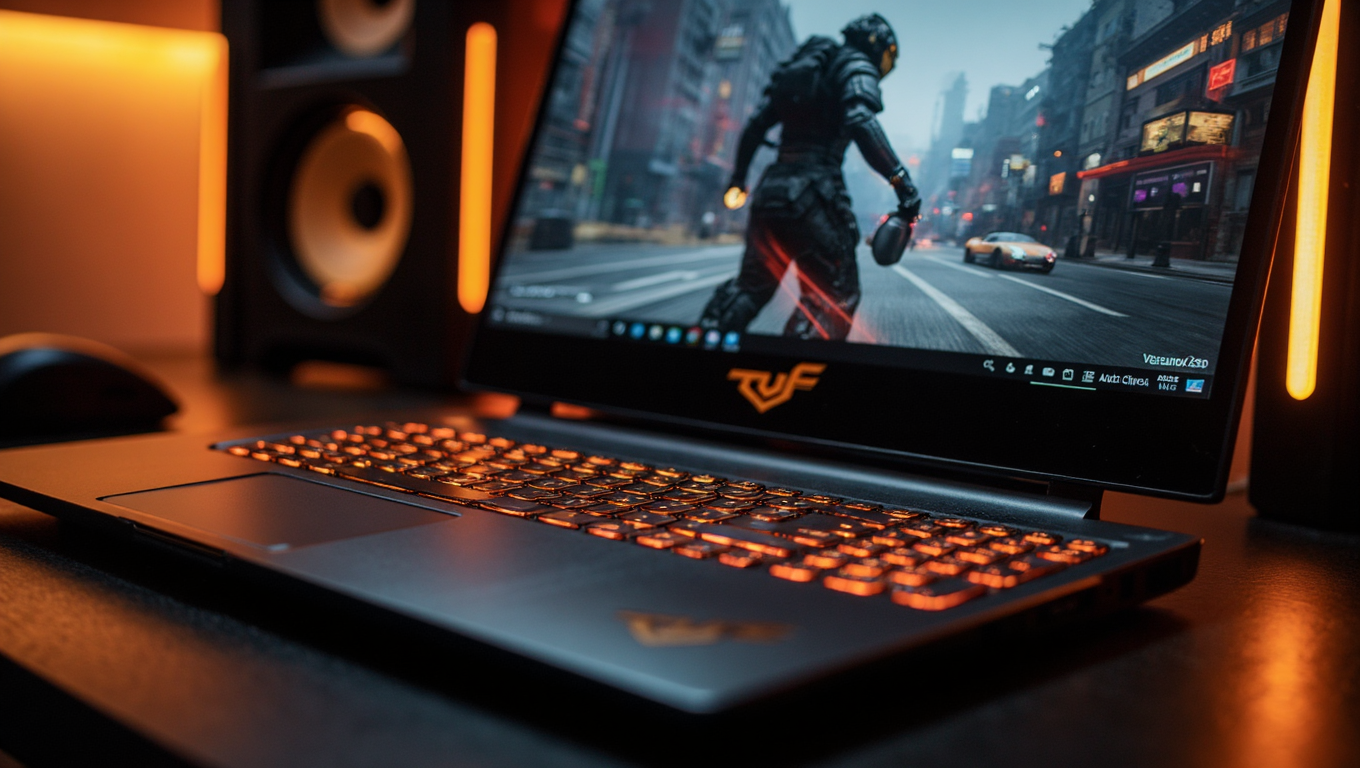In the world of affordable gaming laptops, the Clevo NH70 and Acer Predator Helios 300 are perennial favorites for gamers who want solid performance without emptying their wallets. The NH70, a customizable barebones machine from Taiwanese powerhouse Clevo (often rebranded by Sager or XoticPC), has been a staple since 2019 but still holds up as a value king in 2025 for desk-bound setups.
Meanwhile, the Helios 300 now in its 2025 refresh with 12th-gen Intel and RTX 30-series options remains Acer’s go-to mid-range beast, blending flashy design with everyday usability. Neither is a slim ultrabook, but if you’re torn between raw custom power and polished out-of-the-box vibes, this head-to-head breaks it down. We’ll compare typical configs: NH70 with GTX 1650 (around $1,200) vs. Helios 300 with RTX 3060 ($1,550).
Quick Specs Face-Off
Both deliver 1080p gaming muscle, but the Helios 300’s newer hardware gives it an edge in modern titles. The NH70 shines in upgradability, though.
| Feature | Clevo NH70 (Typical 2025 Config) | Acer Predator Helios 300 (2025 Config) |
|---|---|---|
| Processor (CPU) | Intel Core i7-9750H (9th Gen, 6-core, up to 4.5GHz) | Intel Core i7-12700H (12th Gen, 14-core, up to 4.7GHz) |
| Graphics (GPU) | NVIDIA GTX 1650 4GB (upgradable to RTX 3060) | NVIDIA RTX 3060 6GB (with DLSS/ray tracing) |
| Display | 17.3″ FHD IPS (1920×1080), 144Hz refresh rate | 15.6″ FHD IPS (1920×1080), 144Hz (up to 240Hz options) |
| RAM | 16GB DDR4 (up to 32GB) | 16GB DDR4/DDR5 (up to 32GB) |
| Storage | 512GB NVMe SSD (dual slots for easy expansion) | 512GB NVMe SSD (expandable) |
| Battery | 90Wh, ~3-4 hours light / 1-2 hours gaming | 59Wh, ~4-5 hours light / 1-2 hours gaming |
| Ports | USB-C, HDMI 2.0, Ethernet, multiple USB 3.0 | USB-C (Thunderbolt 4), HDMI 2.1, Ethernet, USB 3.2 |
| Weight | ~2.8 kg (6.2 lbs) | ~2.2 kg (4.9 lbs) |
| OS | Windows 11 Home | Windows 11 Home |
The NH70’s bigger screen is a boon for immersion, but the Helios 300’s lighter build and brighter panel (300+ nits) make it more versatile for non-gaming tasks.
Performance: Helios 300 Pulls Ahead for Modern Games
- Raw Power & Benchmarks: The Helios 300’s 12th-gen i7 crushes multitasking and content creation think 20-30% faster exports in Premiere Pro or smoother 4K editing. In Cinebench R23, it hits ~15,000 multi-core vs. the NH70’s ~10,000. The NH70’s 9th-gen chip is solid for 2025 basics but shows age in heavy loads.
- Gaming FPS: At 1080p medium-high settings (no RT):
- NH70 (GTX 1650): GTA V ~80 FPS, Cyberpunk 2077 ~40-50 FPS, Valorant ~150+ FPS, PUBG ~80-90 FPS. Average ~40 FPS in demanding titles.
- Helios 300 (RTX 3060): GTA V ~100+ FPS, Cyberpunk ~70 FPS (with DLSS), Valorant ~200+ FPS, PUBG ~110 FPS. Ray tracing shines in supported games.
The Helios edges out for AAA 2025 hits like Black Myth: Wukong, thanks to RTX features. Both handle esports flawlessly at 144Hz, but the NH70’s upgradability lets you swap to an RTX later for longevity.
- Thermals & Noise: Expect heat NH70 hits 80-85°C with jet-like fans; Helios uses AeroBlade tech for slightly better control (75-80°C) but still roars. No major throttling on either, but the Helios’ PredatorSense app makes tuning easier (fan curves, overclocking).
Battery Life & Portability: Helios Wins for On-the-Go
Gaming laptops aren’t battery champs, but the Helios 300 lasts a tad longer on light tasks (~4-5 hours browsing/Netflix) thanks to efficient 12th-gen silicon. The NH70 sticks to 3-4 hours, dropping to 1-2 under games same as the Helios. At 2.2kg, the Helios is easier to tote to LAN parties or class; the NH70’s bulk suits stationary setups. Ports are a tie, but Helios’ Thunderbolt 4 adds future-proof docking.
Build, Keyboard, & Display: Style vs. Substance
- Build Quality: NH70’s plastic chassis is sturdy and no-frills great for upgrades but fingerprint-prone. Helios rocks a sleeker two-tone aluminum lid with RGB accents, feeling more premium without fragility.
- Keyboard & Sound: Both have RGB mechanical/membrane keys with good travel, but Helios’ per-key lighting and dedicated media keys win for customization. Speakers are meh on both (tinny bass), but Helios’ Waves MaxxAudio edges clarity for movies.
- Display Quality: NH70’s 17.3″ 144Hz panel is immersive for GTA V sprawls (127ppi sharpness). Helios’ 15.6″ matches refresh but adds G-Sync for tear-free play and better color (72% NTSC). Both handle HDR basics, but neither is creator-grade.
Price & Value in 2025: NH70 for Tight Budgets
- Clevo NH70: $1,000-$1,300 (deals via resellers). Insane value if you customize add RAM cheap.
- Acer Predator Helios 300: $1,300-$1,800 (RTX 3060 starts at $1,550). Worth the extra for newer tech and warranty support.
NH70 saves cash upfront; Helios holds resale better.
Pros & Cons Head-to-Head
Clevo NH70
Pros:
- Cheaper entry price with easy upgrades
- Massive 17.3″ screen for immersion
- Clean, bloatware-free OS
Cons:
- Older CPU/GPU limits future games
- Bulkier and louder
- Mediocre battery
Acer Predator Helios 300
Pros:
- Superior performance and ray tracing
- Lighter, more portable design
- Better software (PredatorSense for tweaks)
Cons:
- Higher cost for similar storage/RAM
- Smaller screen
- Fans still intrusive
Who Should Pick Which?
- Grab the NH70 if you’re under $1,200, love tinkering (e.g., swapping GPUs), and game mostly at home. Perfect for students on a budget or retro AAA fans.
- Go Helios 300 if you want 2025-ready power, portability, and polish ideal for creators, streamers, or anyone chasing 60+ FPS in ray-traced epics.
Final Verdict
The Acer Predator Helios 300 takes the win for most 2025 buyers its newer guts and refined build make it more future-proof and versatile, justifying the ~$300 premium. The Clevo NH70 is no slouch (and a steal for custom builds), but it feels like a reliable old truck next to the Helios’ sporty sedan. If battery or slimness is key, peek at the ASUS TUF A15 (~$1,400). What’s your budget or must-have game? Comment below I’ll weigh in!





